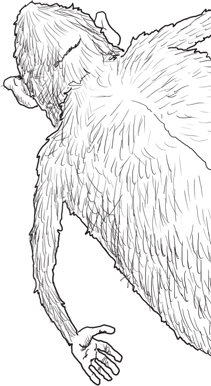
Imagine you are an adventurer on the high seas. It’s the 5th century BC, and you are sailing past the west coast of Africa, keeping a watch for any sign of life — especially of the unfriendly kind!
Now read this account from a real-life adventurer of that time, called Hanno:
‘Leaving this place, we sailed along the burning coast for three days and came to the gulf named the Horn of the South. At the end of it was an island full of savages. The greater parts of these were women. They had hairy bodies and their interpreters called them …’
Can you guess which word came next?
A. Cannibals
B. Gorillas
C. Chimpanzees

ANSWER: B!
The diary account of Hanno, that Greek explorer, has a rather gruesome ending:
‘We pursued some of the males, but we could not catch a single one because they were good climbers and they defended themselves fiercely. However, we managed to take three women. We killed them and removed their skins to take back to Carthage.’
Many centuries later, an American naturalist discovered the bones and skull of a great ape. Remembering Hanno’s story, he named the species Troglodytes Gorilla. Who would have thought that ‘gorillas’ were once thought to be extremely hairy women?
Did you know …
… that the word ‘cannibal’ comes from the Spanish Canibales, and was the name given to the original inhabitants of the Caribbean islands. The modern meaning of the word came about because the Spanish believed the islanders ate whoever they came across!